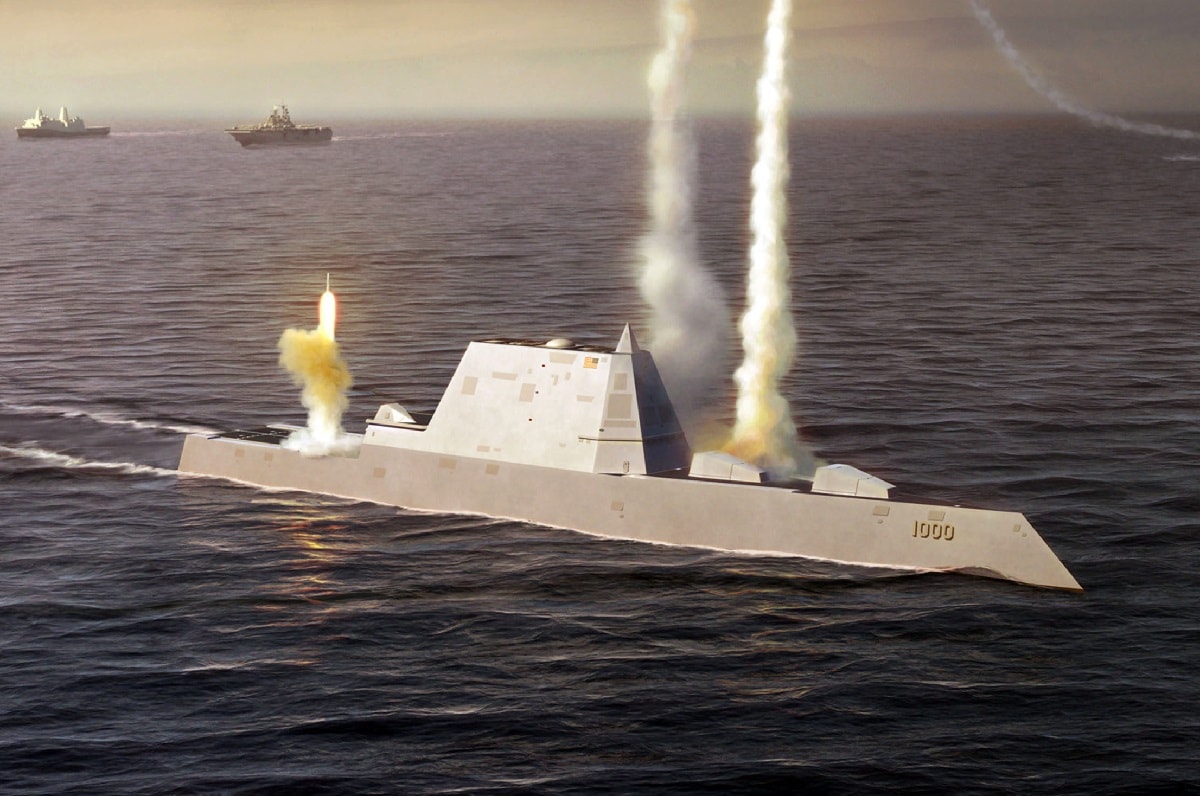The Zumwalt-Class was touted as the future of the U.S. Navy. And yet, only a few were built due to their high cost and number of problems. What exactly happened? The USS Zumwalt is the lead ship among three Zumwalt-class destroyers. It is the largest destroyer in the world.
The USS Zumwalt was named after Adm. Elmo Zumwalt, the youngest chief of naval operations in US history. The ship is a guided-missile destroyer, which means its main purpose is to provide antiaircraft support to the US Navy’s fleet.
The ship’s construction began in October 2008. It was launched in October 2013 and put into commission by the US Navy in October 2016.
The Navy has two other Zumwalt-class destroyers: the USS Michael Monsoor and the USS Lyndon B. Johnson.
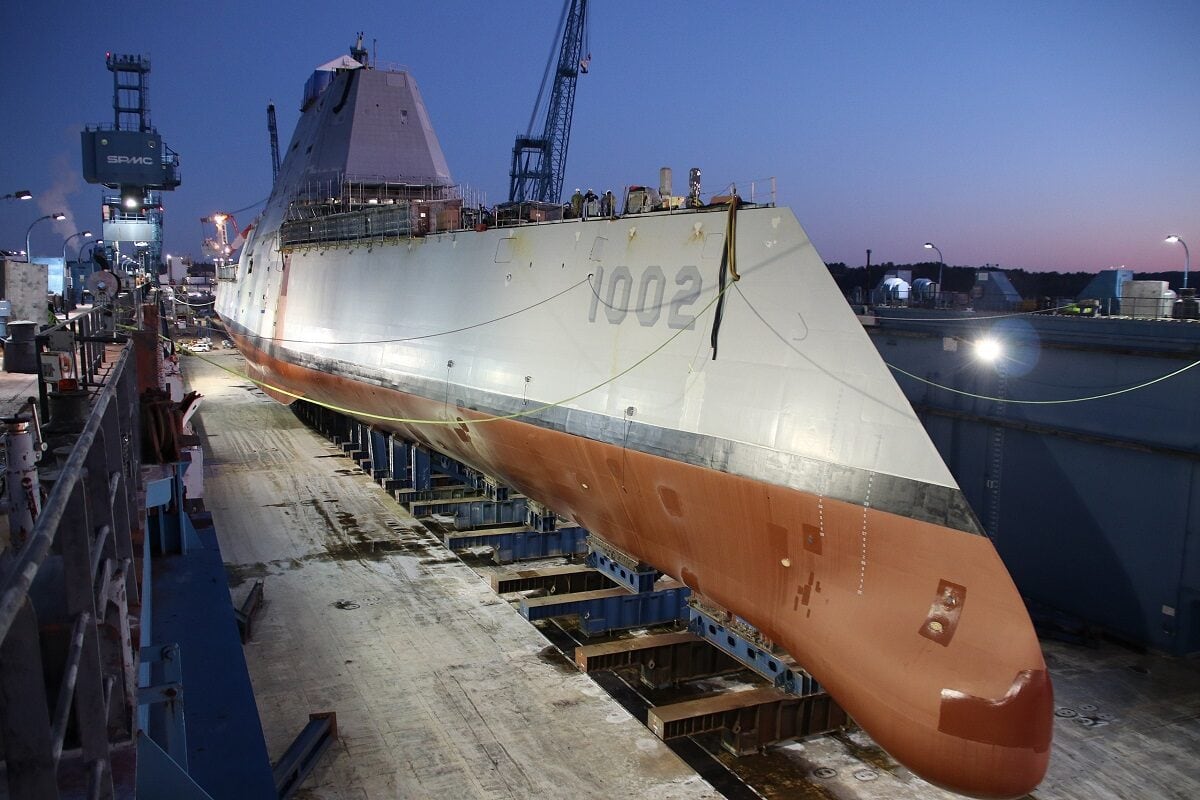
(Dec. 9, 2018) Following a multi-day process that includes moving the ship from the land level facility to the dry dock, the future USS Lyndon B. Johnson (DDG 1002) is made ready before flooding of the dry dock at General Dynamic-Bath Iron Works shipyard, and subsequent launching of the third Zumwalt-class destroyer. (U.S. Navy photo courtesy of General Dynamics-Bath Iron Works/Released)
The ship cost twice as much as some of the Navy’s most powerful ships, its Arleigh Burke-class destroyers, according to the Associated Press.
The three Zumwalt-class destroyers cost about $22.4 billion in research and development, according to Bloomberg. General Dynamics, the owner of the shipyard Bath Iron Works, which built the USS Zumwalt, constructed a $40 million facility just to accommodate the building of the massive ships.
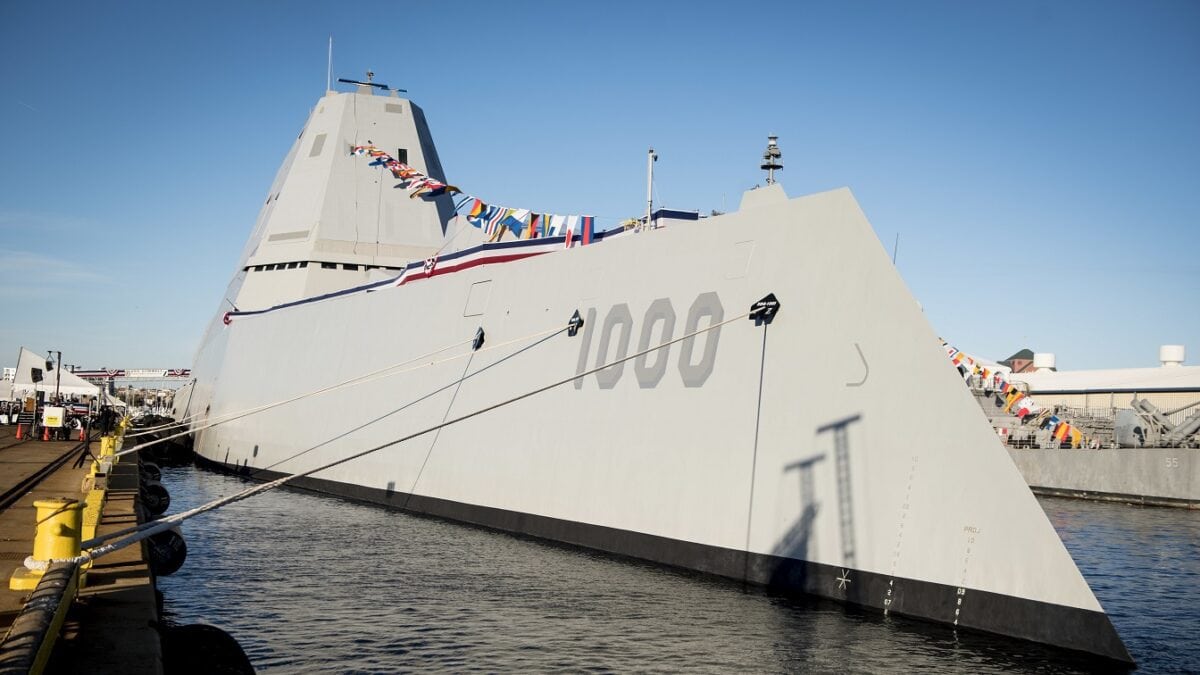
(Oct. 15, 2016) The Navy’s newest and most technologically advanced warship, USS Zumwalt (DDG 1000), is moored to the pier during a commissioning ceremony at North Locust Point in Baltimore. (U.S. Navy photo by Petty Officer 1st Class Nathan Laird/Released)
The ship’s “knife-like” bow is said to make it more stable in heavy seas compared with other surface combatants like destroyers and cruisers, according to Defense News.
The 600-foot ship can accommodate 158 crew members, according to Naval Technology. It has a maximum speed of 30 knots.
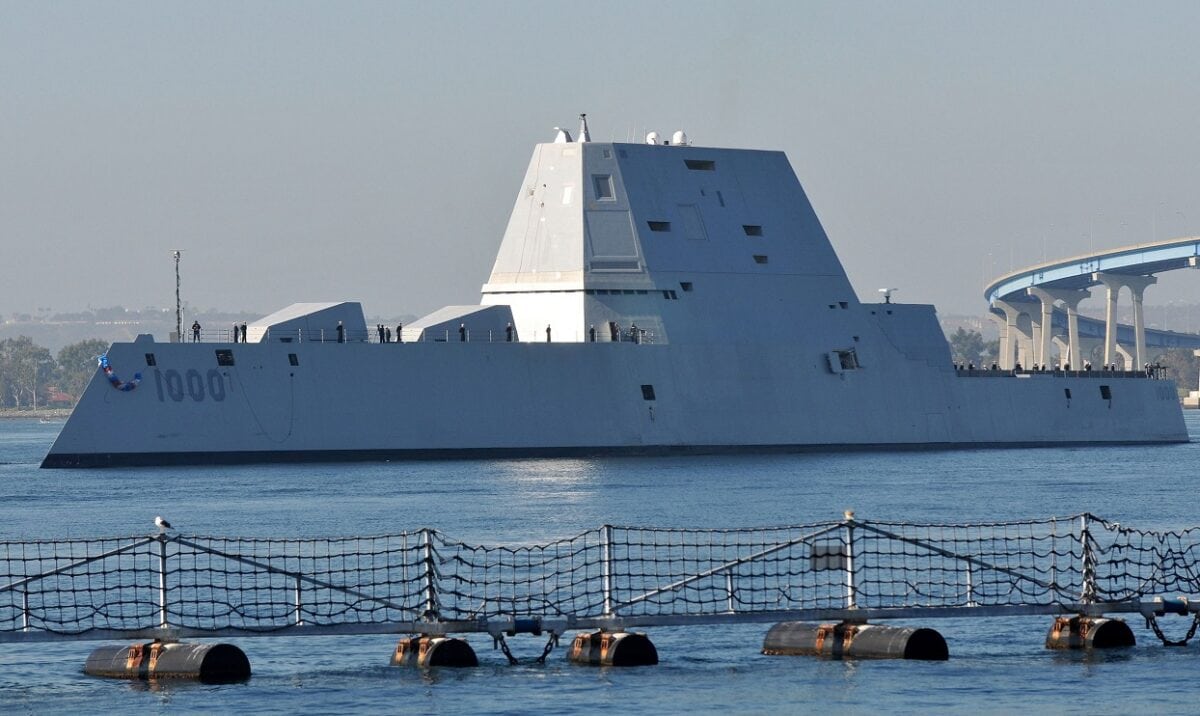
161208-N-ZF498-130 .SAN DIEGO (Dec. 8, 2016) The U.S. Navy’s newest warship, USS Zumwalt (DDG 1000) passes Coronado bridge on its way to Naval Base San Diego. Zumwalt is the lead ship of a class of next-generation multi-mission destroyers, now homeported in San Diego. (U.S. Navy photo by Petty Officer 3rd Class Anthony N. Hilkowski/Released)
The Zumwalt produces about 78 megawatts of power, similar to the energy generated by a nuclear-powered aircraft carrier, according to the US Indo-Pacific Command.
The ship’s sensors include a multifunction radar, according to Naval News. Per the publication, it also has 80 advanced vertical launch cells for specific types of missiles.
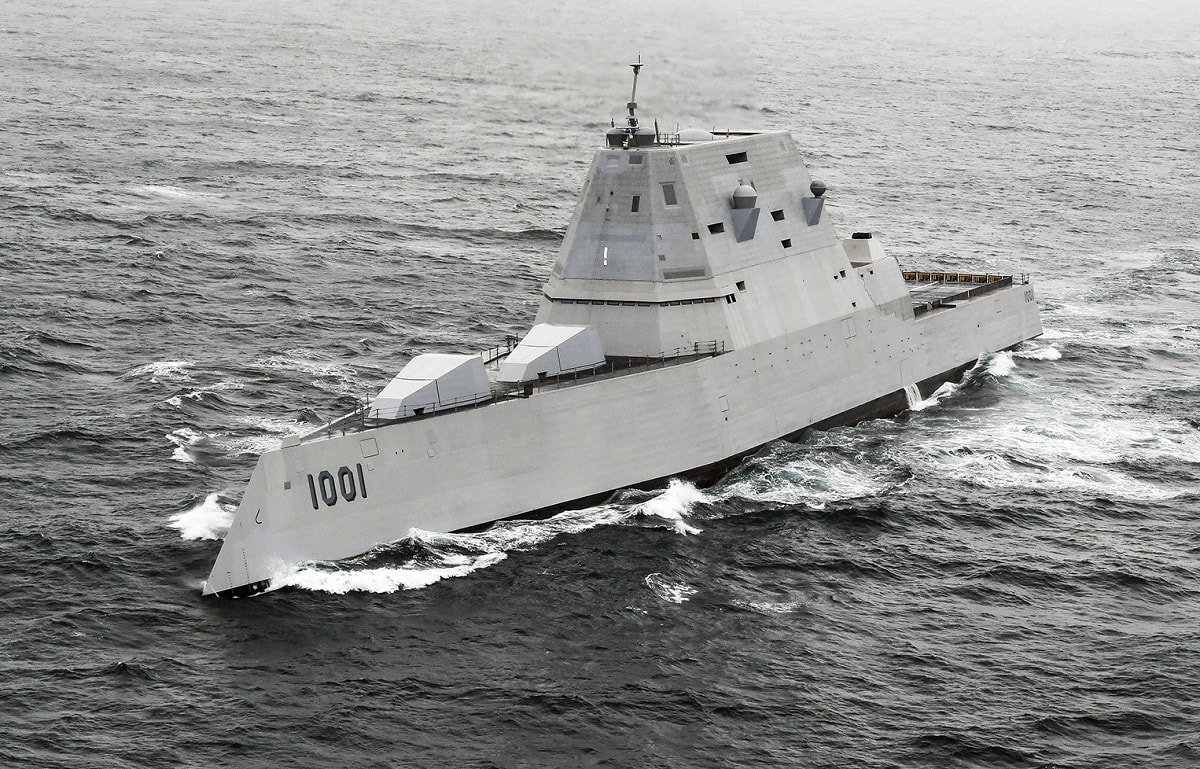
210421-N-FC670-1062 PACIFIC OCEAN (April 21, 2021) Zumwalt-class guided-missile destroyer USS Michael Monsoor (DDG 1001) participates in U.S. Pacific Fleet’s Unmanned Systems Integrated Battle Problem (UxS IBP) 21, April 21. UxS IBP 21 integrates manned and unmanned capabilities into challenging operational scenarios to generate warfighting advantages. (U.S. Navy photo by Chief Mass Communication Specialist Shannon Renfroe)
Despite their cost, the Zumwalts have been plagued by equipment problems. Soon after its commissioning in 2016, the USS Zumwalt broke down in the Panama Canal. The second ship in its class, the USS Michael Monsoor, failed during sea trials the following year.
As a 2018 report from Military Watch Magazine noted the Zumwalts “suffered from poorly functioning weapons, stalling engines, and an underperformance in their stealth capabilities, among other shortcomings.”
“They have almost entirely failed to fulfill the originally intended role of multipurpose destroyer warships, while the scale of cost overruns alone brings the viability of the program into question even if the destroyers were able to function as intended,” the outlet said.
The Zumwalts lack several vital features, including anti-ship missiles, anti-submarine torpedoes, and long-range area-air defense missiles, the military expert Sebastian Roblin wrote in a 2021 National Interest article. Roblin called the destroyers an “ambitious but failed ship concept.”
And, noted Roblin, their weaponry wasn’t cheap. The ship’s long-range land-attack projectile guided shells cost roughly $800,000 each — about the same price as a cruise missile. The munitions were eventually canceled, considered too pricey to merit producing.
Roblin said the Zumwalt was produced based on “unrealistic” estimates that banked on minimal cost, despite coming in 50% over budget.

151207-N-ZZ999-435.ATLANTIC OCEAN (Dec. 7, 2015) The future USS Zumwalt (DDG 1000) is underway for the first time conducting at-sea tests and trials in the Atlantic Ocean Dec. 7, 2015. The multimission ship will provide independent forward presence and deterrence, support special operations forces, and operate as an integral part of joint and combined expeditionary forces. (U.S. Navy photo courtesy of General Dynamics Bath Iron Works/Released)
After a disappointing performance, the Navy considered a host of possibilities for the Zumwalts, including refitting them as “dedicated ship hunters,” which would mean “sacrificing complex anti-aircraft and anti-submarine capabilities for a specialized long-range anti-ship role,” Military Watch Magazine reported in 2018.
That same year, the leader of the US Strategic Command, Gen. John Hyten, posited that the destroyers could be refitted with nuclear cruise missiles.
But earlier this year, the Navy decided to fit the ships with hypersonic missiles by 2025, USNI News reported. Lockheed Martin is set to integrate these missiles on the ship, per Military+Aerospace Electronics.
The Navy’s commander of operations, Adm. Mike Gilday, told Breaking Defense in February 2021 that the Zumwalt-class ships would be the first to test out the hypersonic technology.
“That’s a focus for us to field that system on the Zumwalt destroyers so that we can prove it and field it fast and then scale it,” Gilday said.

